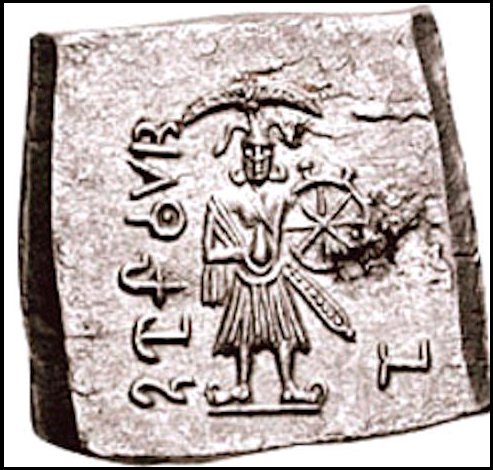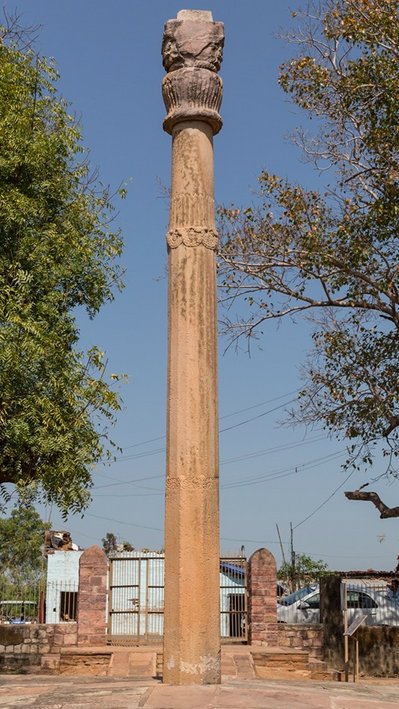One of the great Indian festivals honoring the birth and memory of a great Indian personality -
Vāsudeva Kṛṣṇa
We have Christmas for Jesus Christ
Mawlid for Muhammad
President’s day for George Washington
October 2nd for Mahatma Gandhi
He is a lot more than that.
He represents the lifeblood of a civilization. He is not just one of the most popular Hindu deities. But also the prime influencer of so many aspects of Indian life
Krishna the Yogeshwara
Krishna, the friend of Kuru princes, a participant in the BhArata War
The Youthful Krishna of Vraja who enraptures Gopis with his YogamAya
Bala krishna of Vraja whose Leelas are the basis of much of Indian religion
This tradition of Gaudiya Vaishnavism has been arguably the single most successful Hindu sampradaya outside of the subcontinent
"For the first time since the days of the Roman Empire an Asian religion is being openly practiced by people of Western origin in the streets of Western cities.”
A true statement
“This Garuda-standard of Vāsudeva, the God of Gods was erected here by the devotee Heliodoros, the son of Dion, a man of Taxila, sent by the Great Yona King Antialkidas, as ambassador to King Kasiputra Bhagabhadra”
The last of the great Kushans was named Vasudeva - named after the father of Krishna
While this doesn’t mean that he too was a follower of the Bhagavata religion it indicates Krishna’s appeal at the frontier of the Indian cultural zone
source: booksfact.com

How has his personality been transformed over the millennia to remain as relevant to us today as perhaps in the days of Heliodorus?
But what about independent references to him from outside the Krishna tradition itself?
तद्धैतद्घोर् आङ्गिरसः कृष्णाय
देवकीपुत्रायोक्त्वोवाचापिपास एव स बभूव
सोऽन्तवेलायामेतत्त्रयं प्रतिपद्येताक्षितमस्यच्युतमसि
प्राणसꣳशितमसीति तत्रैते द्वे ऋचौ भवतः
“Ghora Âṅgirasa, having communicated this to Krishna, the son of Devăkî ....said 'Let a man, when his end approaches, take refuge in these three: "Thou art the imperishable""Thou art the unchangeable""Thou art the subtle Prâna”(Ganganath Jha)
But nevertheless given the reference to Devaki as well, it seems likely
Yaska’s Nirukta (the famous etymological dictionary that refers to Syamantaka jewel associated with Krishna)
Ashtadhyayi of Panini - which refers to Vāsudeva
(Contd..)
Several references in ArthasAstra of Kautilya
(Contd..)
Patanjali, the commentator on Panini, refers to Kamsavadha episode - a famous part of Krishna lore
This is a personality that has fascinated the Indian mind for at least 2500 years if not more
There is also mention by Quintus Curtius that when Alexander confronted Porus in the North West, Porus’s soldiers were carrying an image of Herakles
So it is evident that the Vaishnavite imagery of Krishna was very well developed even in popular religion well before the Common Era
The foremost of these texts is no doubt the Mahabharata, an ItihAsa that is at-least in part historical
There is little doubt that the war was historical, and clearly Krishna was a key character in the whole saga
But that still makes it an event of considerable antiquity
In fact he declares in the Gita that the system of four Varnas in accordance with the Gunas, was as desired by him
Having said that it is a text that enjoins individuals to engage in their Swadharma and Karma Yoga. So it is not a fatalistic text by any means
Krishna presents a more worldly interpretation of Yoga
Where Yoga is not just about stilling the mind (Chitta Vritti Nirodah) as stated by Patanjali, but can also be viewed as “Dexterity in action”
(Yogah Karmasu Kaushalam)
The other two sources are Vishnu Purana and Bhagavata Purana
He inspired the great Tamil poets of the South to write mellifluous poetry - that is still viewed as an essential part of Sri-Vaishnava canon to this day (the Nalayira Divya Prabandham)
The Deity who leverages Yoga Maya to bless the maidens of Vraja and Radha in particular
Here’s a personality that has constantly evolved
(Contd..)
But they have been successfully reconciled.
Orthodox Smartha system has come to terms with Bhagavata religion of the Vaishnavas, and today both are integral to the Vedic / Dharmic ecosystem
The Pancharatra literature discussed the concept of Vyuhas with Vasudeva-Krishna as the highest god, giving rise to Sankarshana, Pradyumna, and Aniruddha.
Pancharatra literature also emphasized religious practice in a very unequivocal manner - that influences temple worship to this day (particularly in Vaishnavite temples).
Abhigamna (morning ablutions and prayers to the lord)
Upadana (collecting worship materials)
Ijya (worship with offerings)
Swadhyaya (self study)
Yoga
Sankara in his Brahma Sutra Bhashya refutes the Bhagavata doctrine and the theory of Vyuhas by citing that the “Self / individual soul” is uncreated as per the Brahma Sutras
archive.org/details/Brahma…
“dvapariyair janair viṣṇuḥ pancarātrais ca kevalam kalau tu nāma-mātreṇa pujyate bhagavan hariḥ”
The modern ISKCON movement is very much rooted in this Sampradaya, and may be regarded as a 20th century renaissance - with Srila Prabhupada spreading the faith in the West
But he has had an equally important impact on Indian literature
Jayadeva’s Gita Govinda (12th cen)
Vedanta Desika’s Yadavabhyudayam (13th cen)
and finally
the much celebrated Narayaneeyam by Melpathur Bhattathiri of Kerala (17th cen)
Not to forget the work of Surdas in medieval North India in Braja Bhasha.
Al Biruni writing in early 11th century is fascinated by Bharata war and the central importance of Vasudeva Krishna.
So clearly there existed a historical memory of this great figure who changed so many things in Indian life
He is Kishan in the North Indian plain
Vithoba in Maharashtra
Shrinathji in Rajasthan
Guruvayurappan in Kerala
Kannan in Tamil Nadu
Jagannath in Odisha
It is very much worth our while to meditate and reflect on Him at least once a year, if not more often








